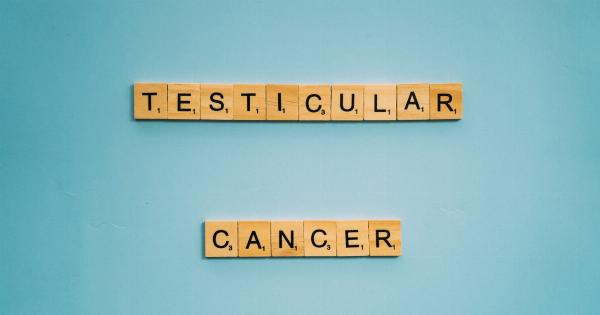Cryptorchidism, commonly known as crypt, is a medical condition that affects male reproductive health. It is characterized by the failure of one or both testicles to descend from the abdomen into the scrotum, their normal anatomical position.
Crypt is a common condition among male infants and boys, with about 3% of full-term male infants and up to 30% of premature male infants being affected. Crypt can lead to infertility and other health problems later in life if not treated.
What Causes Crypt?
The exact cause of crypt is not clear, but several factors have been identified to contribute to the condition, including:.
- Genetics: Crypt has been linked to several genes, including INSL-3 and RXFP2.
- Hormonal factors: Testosterone and other hormones play a role in the descent of the testicles. Any disruption in their production or action can cause crypt.
- Environmental factors: Exposure to certain toxic chemicals during pregnancy and early infancy may increase the risk of crypt.
- Other medical conditions: Certain medical conditions, such as Down syndrome and Prader-Willi syndrome, are associated with a higher risk of crypt.
What Are the Symptoms of Crypt?
The main symptom of crypt is the absence or incomplete descent of one or both testicles into the scrotum. The affected testicle(s) may be located in the abdomen, inguinal canal, or anywhere along the normal descending path.
In some cases, the testicle(s) may be palpable during physical examination, while in others, they may be non-palpable. Crypt can be unilateral, affecting only one testicle, or bilateral, affecting both.
How Is Crypt Diagnosed?
Crypt is usually diagnosed during a physical examination by a pediatrician or urologist. The doctor will feel the scrotum and groin area to locate the testicles and determine their size, shape, and consistency.
If one or both testicles are not palpable, imaging studies, such as ultrasound and magnetic resonance imaging, may be used to locate them. Blood tests may also be performed to check for hormonal imbalances.
What Are the Complications of Crypt?
Untreated crypt can lead to several complications, including:.
- Infertility: Crypt is a major cause of male infertility, affecting up to 20% of infertile men. The risk of infertility increases with age and duration of untreated crypt.
- Torsion: Crypt testicles are more prone to torsion, a painful condition in which the blood supply to the testicle is cut off, leading to tissue damage and loss of function.
- Cancer: Crypt testicles have a higher risk of developing testicular cancer, especially if they are located in the abdomen.
- Psychosocial issues: Men with crypt may experience shame, embarrassment, and decreased self-esteem due to their condition.
How Is Crypt Treated?
The treatment of crypt depends on the age of the patient and the severity of the condition. The main goal of treatment is to bring the testicle(s) down into the scrotum and prevent or minimize the risk of complications. Treatment options include:.
- Watchful waiting: In some cases, especially in infants and young boys, crypt may resolve on its own without intervention. The doctor will monitor the condition and check the testicles regularly.
- Hormonal therapy: In some cases, hormonal treatments, such as human chorionic gonadotropin (HCG) and gonadotropin-releasing hormone (GnRH), may be used to stimulate the descent of the testicles. Hormonal therapy is most effective in patients with mild or moderate crypt.
- Surgery: Surgery is the most common and effective treatment for crypt. The procedure, called orchiopexy, involves locating the testicle(s) and attaching them to the scrotum with sutures or mesh. Orchiopexy can be performed through an open incision or laparoscopically, depending on the case.
How Can You Prevent Crypt?
Since the exact cause of crypt is not known, there is no sure way to prevent it. However, some measures may reduce the risk or severity of crypt, such as:.
- Reducing exposure to toxins and other environmental hazards during pregnancy and infancy.
- Managing underlying medical conditions that may increase the risk of crypt.
- Regular check-ups with a pediatrician or urologist to monitor the growth and development of the testicles.
Conclusion
Crypt is a common and potentially serious medical condition that affects male reproductive health. It can lead to infertility and other complications if left untreated.
If you or your child have symptoms of crypt, such as non-palpable testicles or undescended testicles, seek medical attention promptly. With proper diagnosis and treatment, crypt can be managed effectively and its impact on fertility and quality of life can be minimized.






























